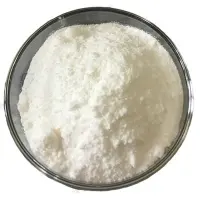-
Categories
-
Pharmaceutical Intermediates
-
Active Pharmaceutical Ingredients
-
Food Additives
- Industrial Coatings
- Agrochemicals
- Dyes and Pigments
- Surfactant
- Flavors and Fragrances
- Chemical Reagents
- Catalyst and Auxiliary
- Natural Products
- Inorganic Chemistry
-
Organic Chemistry
-
Biochemical Engineering
- Analytical Chemistry
-
Cosmetic Ingredient
- Water Treatment Chemical
-
Pharmaceutical Intermediates
Promotion
ECHEMI Mall
Wholesale
Weekly Price
Exhibition
News
-
Trade Service
Obesity is known to be a major cause of metabolic and cardiovascular disease.
In addition to the white fats that store calories that can lead to obesity, there is another magical brown fat (BAT) that contributes to calorie consumption and increased use of systemic glucose and lipids and is therefore considered a potential target for the treatment of obesity and metabolic diseases.
But brown fat becomes smaller and smaller with age, and only a small amount remains around the necks and shoulders of some adults, so there is no large-scale study to see whether brown fat is beneficial to the treatment of cardiovascular metabolism and obesity-related diseases in humans.
A large-scale study of more than 52,000 participants, published recently in Nature Medicine by researchers at Rockefeller University in the United States, identified bat's potential role in promoting cardiovascular metabolic health, with a significantly lower risk of cardiovascular disease and type 2 diabetes in individual BAT.
analysis of the study was based on 134,529 18F-FDG positive electron emission fault scans (PET/CT) reports from 52,487 patients treated at memorial Sloan Kettering Cancer Center (MSKCC) between 2009 and 2018.
researchers divided patients into two groups based on whether they had brown fat in their bodies, and counted their whole blood cell count, lipids, blood sugar and blood pressure levels, as well as the prevalence of type 2 diabetes (T2DM), blood lipid abnormalities, hypertension, coronary artery disease (CAD), congestive heart failure (CHF) and cerebrovascular disease (CVD).
researchers first assessed the correlation between BAT and age, outdoor temperature and BMI during the 18F-FDG PET/CT index scan month and found that BAT was more common in women, decreasing with age, and the higher the ambient temperature and BMI, the lower the BAT content.
Then, using a multivariate logistic regression model that adjusted for age, sex, BMI, outdoor temperature, the researchers analyzed whether taking antitensive and statins reduced BAT content and activity, and found that the use of β-blockers and statins showed a significant negative correlation with BAT content and activity.
In addition, cancer-specific treatments such as digestive organs, eyes, brain and central nervous system, as well as cancer-specific treatments such as alkanes, anti-metabolites, immunomodulation therapy, silky division inhibitors, and targeted therapies, were also associated with lower BAT.
After adjusting for a variety of covariates, the researchers compared the prevalence of brown fat and cardiovascular and metabolic diseases and found that the prevalence of T2DM and blood lipid abnormalities was significantly lower in patients with BAT than in patients without BAT, at 4.6% and 18.9%, in addition, patients with BAT included atrial fibrillation (2.8% VS VS Cardiovascular diseases such as 3.6%), CAD (3.1% VS 4.9%), CVD (2.1% VS 2.8%), CHF (1.0% VS 2.0%) and hypertension (26.7% VS 30.7%) were also relatively low.
researchers also layered the data using BMI to determine whether the BAT was also associated with improved cardiovascular metabolic health in overweight and obese patients.
found that the prevalence of cardiovascular and metabolic diseases increased with the increase in BMI, but this effect was significantly reduced in individuals with BAT, particularly in the prevalence of T2DM, CAD and CHF.
addition, changes in blood sugar and triglycerides associated with elevated BMI were also offset in individuals with BAT, and HDL levels were higher in BAT individuals in the same BMI category.
Paul Cohen, co-author of the study, said: "We plan to further study the biological properties of brown fat to find genetic variations that explain why some people have more brown fat than others, and to solve the problem of what I can do to get more brown fat, which is the first step in developing a pharmacological approach to stimulating brown fat to treat obesity and related conditions."
" Reference:







